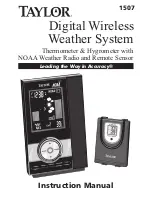
system setup options that you can set.
O
Optical Drive —
A drive that uses optical technology to read or write data from CDs, DVDs, or DVD+RWs. Example of optical
drives include CD drives, DVD drives, CD-RW drives, and CD-RW/DVD combo drives.
P
parallel connector —
An I/O port often used to connect a parallel printer to your computer. Also referred to as an
LPT port
.
partition —
A physical storage area on a hard drive that is assigned to one or more logical storage areas known as logical
drives. Each partition can contain multiple logical drives.
PC Card —
A removable I/O card adhering to the PCMCIA standard. Modems and network adapters are common types of PC
Cards.
PCI —
peripheral component interconnect — PCI is a local bus that supports 32-and 64-bit data paths, providing a high-
speed data path between the microprocessor and devices such as video, drives, and networks.
PCMCIA —
Personal Computer Memory Card International Association — The organization that establishes standards for PC
Cards.
PIN —
personal identification number — A sequence of numerals and/or letters used to restrict unauthorized access to
computer networks and other secure systems.
PIO —
programmed input/output — A method of transferring data between two devices through the microprocessor as part of
the data path.
pixel —
A single point on a display screen. Pixels are arranged in rows and columns to create an image. A video resolution,
such as 800 x 600, is expressed as the number of pixels across by the number of pixels up and down.
Plug-and-Play —
The ability of the computer to automatically configure devices. Plug and Play provides automatic
installation, configuration, and compatibility with existing hardware if the BIOS, operating system, and all devices are Plug
and Play compliant.
POST —
power-on self-test — Diagnostics programs, loaded automatically by the BIOS, that perform basic tests on the major
computer components, such as memory, hard drives, and video. If no problems are detected during POST, the computer
continues the start-up.
program —
Any software that processes data for you, including spreadsheet, word processor, database, and game packages.
Programs require an operating system to run.
PS/2 —
personal system/2 — A type of connector for attaching a PS/2-compatible keyboard, mouse, or keypad.
PXE —
pre-boot execution environment — A WfM (Wired for Management) standard that allows networked computers that do
not have an operating system to be configured and started remotely.
R
RAID —
redundant array of independent disks — A system of two or more drives working together for performance and fault
tolerance. RAID drives are typically used on servers and high-end PCs. The three most common RAID levels are 0, 3, and 5:
Level 0: Provides data striping but no redundancy. Level 0 improves performance but does not provide fault
tolerance.
Level 3: Same as Level 0, but also reserves one dedicated drive for error correction data, providing good
performance and some level of fault tolerance.
Level 5: Provides data striping at the byte level and also stripe error correction information, resulting in excellent
performance and good fault tolerance.
RAM —
random-access memory — The primary temporary storage area for program instructions and data. Any information
stored in RAM is lost when you shut down your computer.
Summary of Contents for PR01X - Advanced Port Replicator 2U442
Page 21: ......




































